Reportar esta entrada
Más sobre la misma comunidad-colección
El Club de la Mujer de El Paso - 2016
May 7, 2016 - 3-6pm Seventh Wall of Giants - Please join the ...
The Sausage Shop (La salchichería)
Home owned business making delicious sausage for over 20+ years. ...
Variedad deliciosa de 20+ tipos de salchichas
Sausage for all occasions, tailgating, cookouts, barbecues. ...
The Sausage Shop (La Salchichería)
Variety of sausages made - Sausage Shop located at 3909 Tompkins ...
Olga Bernstein Kohlberg Ceremonia
Jackie Morgan-Tomko, president of the Woman's Club of El Paso is ...
Chopin Hall, El Paso, Tejas 1905
Chopin Hall, facing Myrtle Street, where the Woman's Club of El ...
El Club de la Mujer de El Paso - 1952
The Woman's Club of El Paso - Follies - 1952. The Woman's Club ...
El Club de la Mujer de El Paso - 1916
The construction crew building the Woman's Club Of El Paso ...
Club de la Mujer de El Paso - 1950
Cooking skit in clubhouse auditorium, about 1950s. Woman's club ...
Club de la Mujer de El Paso - 1981
Mary S. Cunningham at the plaque dedication ceremony, March 18, ...
El Club de la Mujer de El Paso - 1976
Members touring the Special Events Center construction site with ...
El Club de la Mujer de El Paso - 1941
Herb booth at a Mexican Fiesta hosted by the Woman's Club in ...
El Club de la Mujer de El Paso - 1927
Woman's Club members wear pirate costumes for a performance of ...
El Club de la Mujer de El Paso - 1979
Members dressed as flappers for a vaudeville show. Night of ...
El Club de la Mujer de El Paso - 1995
Farolitos and lights decorate the Woman's Club building, 1995, ...
El Club de la Mujer de El Paso - 1910
President of the El Paso Woman’s Club – Mrs. W. T. Owen – ...





















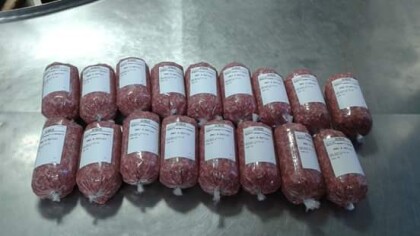
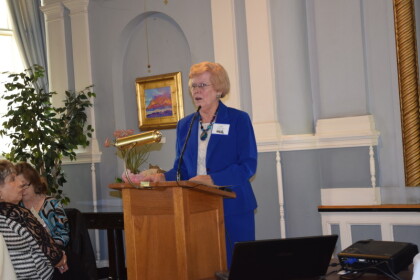
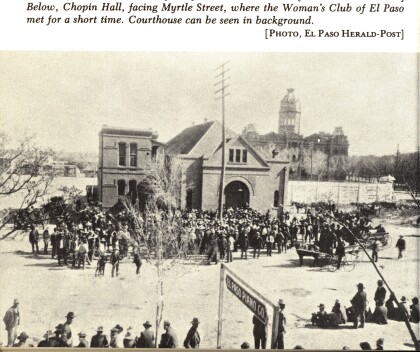
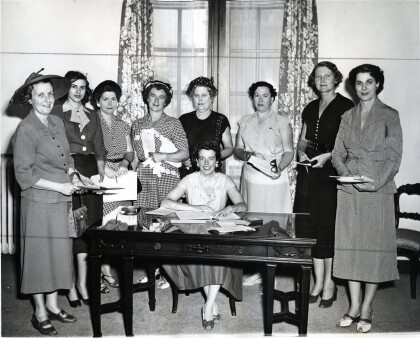
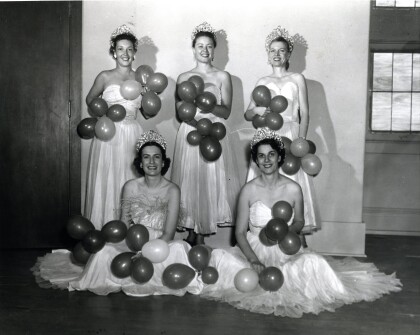
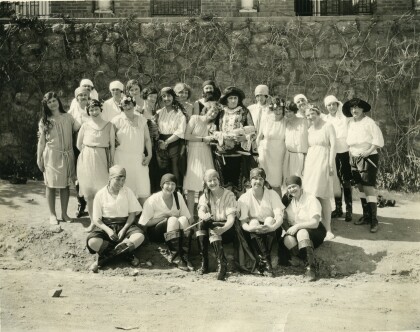
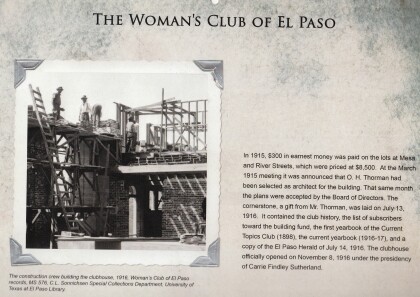
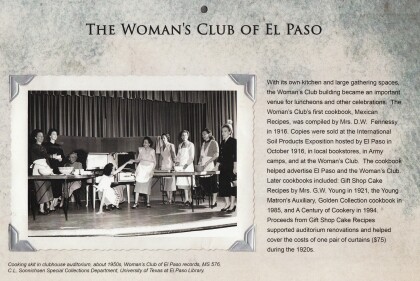
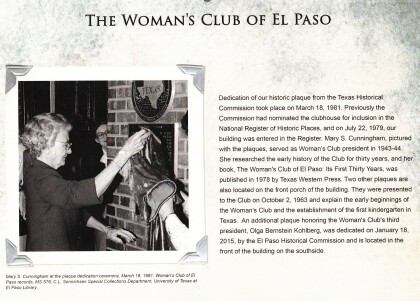
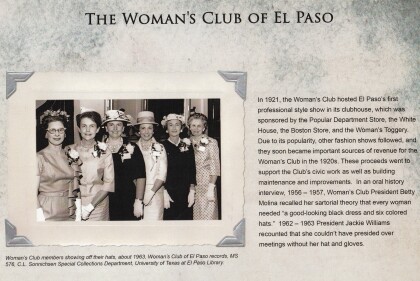
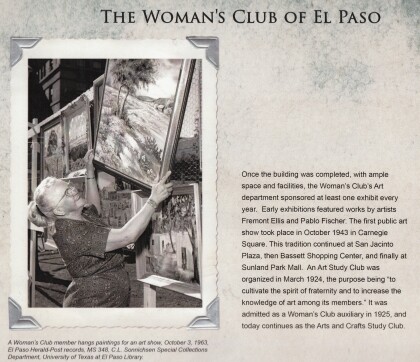
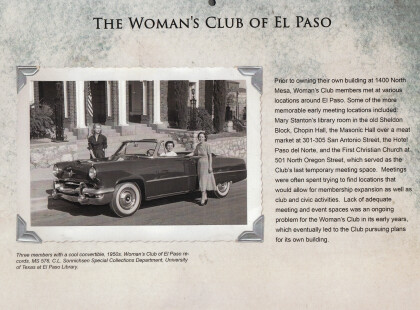
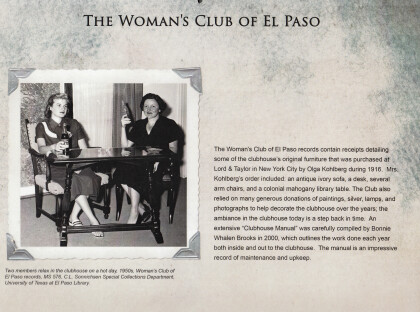
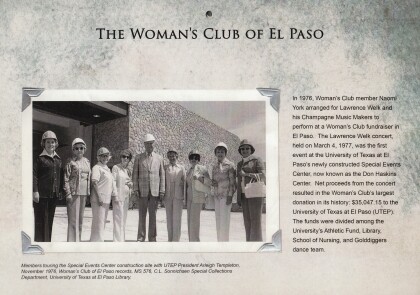
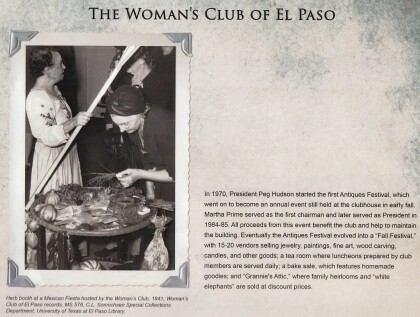
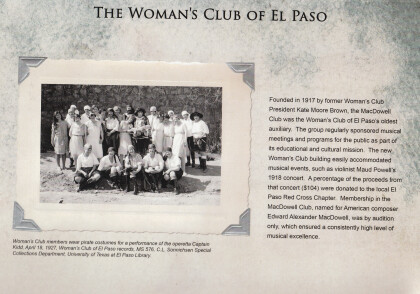
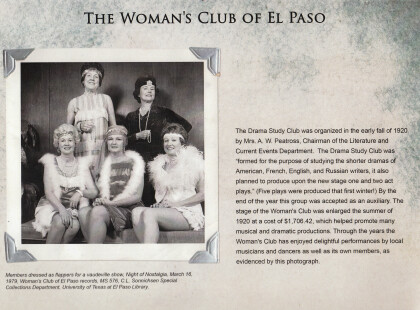
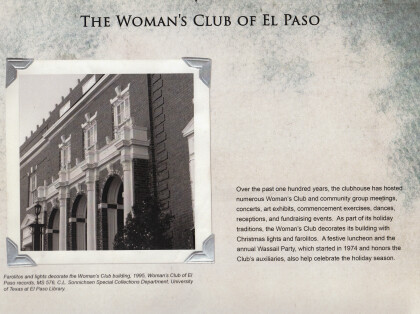
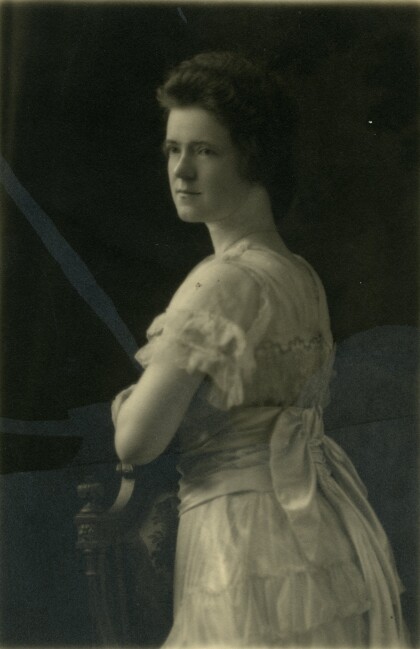
Comentarios
Hacer un comentario